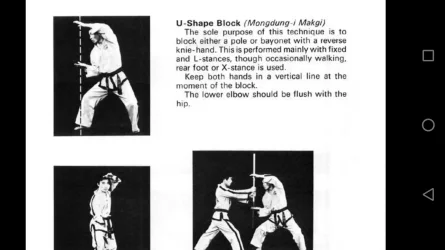So, U shaped block...
Specifically the one detailed as the final two moves in Joong-Gun tul.
In 'my' school, and in many other references I've found, it's "Digutja Makgi".
In the copy of the encyclopedia I have (old version) it's referred to as "Mongdung-i Makgi" in the tul description (vol 9) and in the defensive hand techniques (vol 3).
In punching techniques (also vol 3) there is a 'U' shaped punch called "Digutja Jirugi" which is ostensibly the same posture, but using an apjoomuk offence rather than sonkal dung defence...
So, question(s)...
Was Mongdung-i Makgi renamed or are Mongdung-i Makgi and Digutja Makgi separate techniques?
If it was renamed, when and possibly why (to satisfy my TKD geek)?
If they're different, in what way do they differ?
(I'm planning to ask at class next time there's time, hopefully tonight - but it'd be interesting to see if there's any variation in explanation.)
Oh, and anyone have a reliable source of how they're written in hangul?
I may have more language questions later
Specifically the one detailed as the final two moves in Joong-Gun tul.
In 'my' school, and in many other references I've found, it's "Digutja Makgi".
In the copy of the encyclopedia I have (old version) it's referred to as "Mongdung-i Makgi" in the tul description (vol 9) and in the defensive hand techniques (vol 3).
In punching techniques (also vol 3) there is a 'U' shaped punch called "Digutja Jirugi" which is ostensibly the same posture, but using an apjoomuk offence rather than sonkal dung defence...
So, question(s)...
Was Mongdung-i Makgi renamed or are Mongdung-i Makgi and Digutja Makgi separate techniques?
If it was renamed, when and possibly why (to satisfy my TKD geek)?
If they're different, in what way do they differ?
(I'm planning to ask at class next time there's time, hopefully tonight - but it'd be interesting to see if there's any variation in explanation.)
Oh, and anyone have a reliable source of how they're written in hangul?
I may have more language questions later


